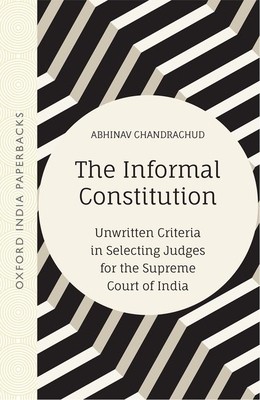
- We will send in 10–14 business days.
- Author: Abhinav Chandrachud
- Publisher: Oxford University Press, USA
- ISBN-10: 019012766X
- ISBN-13: 9780190127664
- Format: 14.2 x 21.6 x 2.3 cm, minkšti viršeliai
- Language: English
- SAVE -10% with code: EXTRA
Reviews
Description
Enacted for historical reasons on 26 January 1950, the Constitution of India provided that the Supreme Court of India, situated in New Delhi, was to have one Chief Justice of India, and not more than seven judges. Today, the Court has 33 judges in addition to the Chief Justice of India. But who are these judges, and where did they come from?
Its central thesis is that despite all established formal constitutional requirements, there are three informal criteria which are used for appointing judges to the Supreme Court: age, seniority, and diversity. The author examines debates surrounding the Indian judicial system since the institution of the federal court during the British Raj. This leads to a study of the political developments that resulted in the present 'collegium system' of appointing judges to the Supreme Court of India.
EXTRA 10 % discount with code: EXTRA
The promotion ends in 22d.11:59:28
The discount code is valid when purchasing from 10 €. Discounts do not stack.
- Author: Abhinav Chandrachud
- Publisher: Oxford University Press, USA
- ISBN-10: 019012766X
- ISBN-13: 9780190127664
- Format: 14.2 x 21.6 x 2.3 cm, minkšti viršeliai
- Language: English English
Enacted for historical reasons on 26 January 1950, the Constitution of India provided that the Supreme Court of India, situated in New Delhi, was to have one Chief Justice of India, and not more than seven judges. Today, the Court has 33 judges in addition to the Chief Justice of India. But who are these judges, and where did they come from?
Its central thesis is that despite all established formal constitutional requirements, there are three informal criteria which are used for appointing judges to the Supreme Court: age, seniority, and diversity. The author examines debates surrounding the Indian judicial system since the institution of the federal court during the British Raj. This leads to a study of the political developments that resulted in the present 'collegium system' of appointing judges to the Supreme Court of India.


Reviews